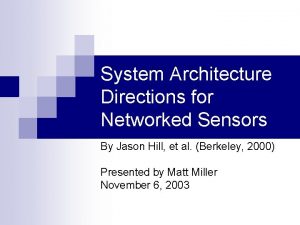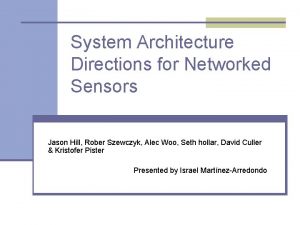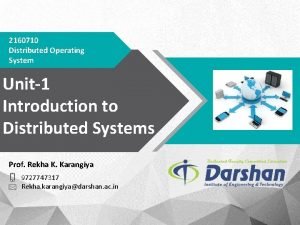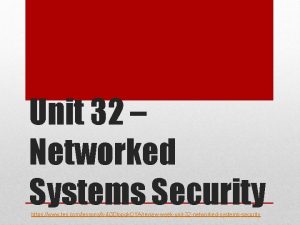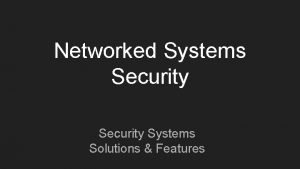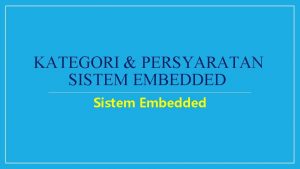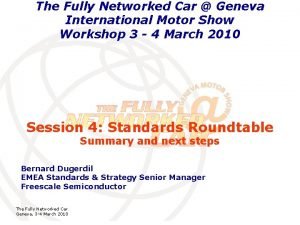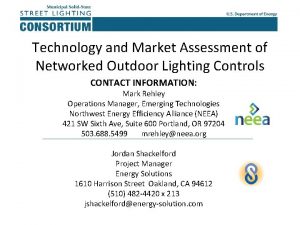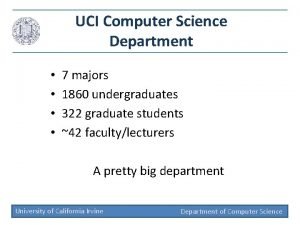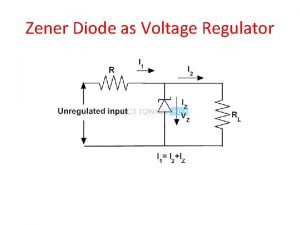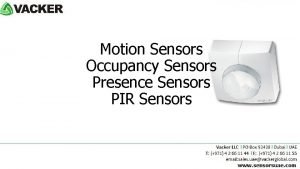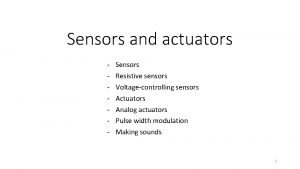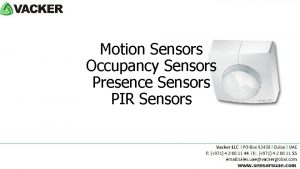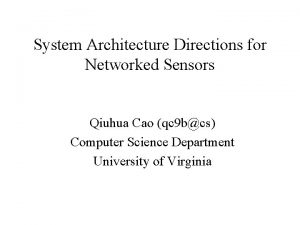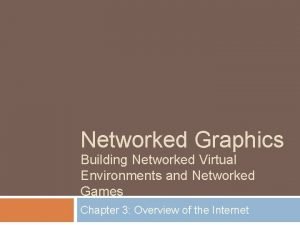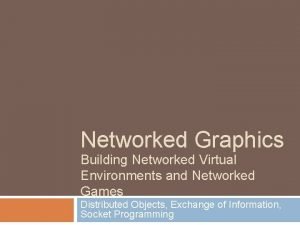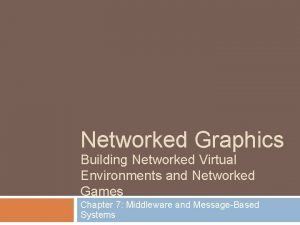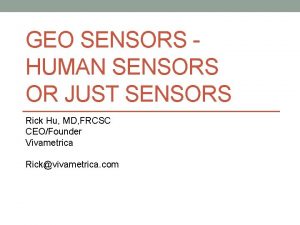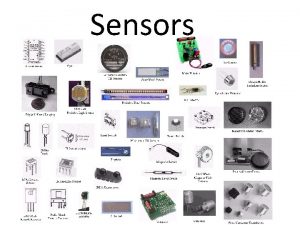System Architecture Directions for Networked Sensors J Hill













- Slides: 13

System Architecture Directions for Networked Sensors (J. Hill, et al) Presented By: Sarah Bergbreiter EE 249 Discussion Section October 15, 2002 1 EE 249 Discussion

What are Networked Sensors? Mica Mote 1 mm Smart Dust • Cheap, plentiful, low-power, small, communication-enabled (radio, optical, etc) 2 EE 249 Discussion

Networked Sensor Characteristics • Small physical size and low power consumption • Concurrency Intensive Operation – sensing data, forwarding packets, etc. • Limited Physical Parallelism and Controller Hierarchy – can’t have one processor per sensor • Diversity in Design and Usage – modular components allow for application specific design • Robust Operation – numerous and unattended 3 EE 249 Discussion

Sample Hardware Design Coprocessor - reprogramming Sensors Radio - 1 m. J/bit - real time constraints Atmel AVR - power save modes - memory constrained 4 EE 249 Discussion

Tiny. OS Overview • Small size and power limitations decided by the hardware platform • Two-Level Scheduling – long running tasks (processing data) – hardware events (radio, sensors, etc. ) • Event-Driven Design – better concurrency – power savings • Modular Component-Based Design 5 EE 249 Discussion

MSG_SEND _DONE MSG_REC SEND_MSG POWER • Commands • Events • Frame INIT Tiny. OS Design – Components – static, fixed 6 TX_PACKET _DONE INTERNAL STATE (FRAME) RX_PACKET _DONE TX_PACKET • Type depends on hardware connection POWER – simulate concurrency MESSAGING COMPONENT INIT • Tasks SEND_MSG THREAD EE 249 Discussion

Ad hoc Routing Application 3 6 4 5 4 7 5 3 8 6 2 9 7 1 2 1 7 EE 249 Discussion

How Does Tiny. OS Perform? • Small Physical Size – scheduler uses 178 bytes program memory, 16 bytes data memory – application ~3 k program memory, 226 bytes data memory • Concurrency-intensive Operations – context switching relatively cheap (equivalent to writing 6 bytes in memory) – interrupt handling more expensive in software 8 EE 249 Discussion

How Does Tiny. OS Perform? • Efficient Modularity – using function calls to propagate events and commands keeps costs low 40 ms 9 EE 249 Discussion

How Does Tiny. OS Perform? • Limited Physical Parallelism and Controller Hierarchy – make design choices about parallelism based on data • Diversity in Usage and Robust Operation – reconfigurable for node failure 10 EE 249 Discussion

Related Work • Other Operating Systems – These operating systems address embedded PCs – Control v. dataflow (context switching difficult) • FSM Description Language • New Hardware Platforms and Applications 11 EE 249 Discussion

Architectural Implications • Physical parallelism is optional • Deciding where to draw the hardware/software boundary line may improve performance and/or power usage • Quantified effect of additional hardware support (early benchmarks) 12 EE 249 Discussion

Conclusions/Questions • Sample hardware/software architecture presented for networked sensors • Bigger is no longer better • Platform-based design? • Complexity limits? 13 EE 249 Discussion
 System architecture directions for networked sensors
System architecture directions for networked sensors System architecture directions for networked sensors
System architecture directions for networked sensors Processor pool model in distributed system
Processor pool model in distributed system Unit 32 networked system security
Unit 32 networked system security Networked systems security
Networked systems security Networked embedded system
Networked embedded system Networked insurance
Networked insurance Fully networked vehicle
Fully networked vehicle Airinet
Airinet Uci ics specialization
Uci ics specialization Networked digital library of theses and dissertations ndltd
Networked digital library of theses and dissertations ndltd Networked sensor array
Networked sensor array Static characteristics of sensors
Static characteristics of sensors Wearable inertial sensors
Wearable inertial sensors
